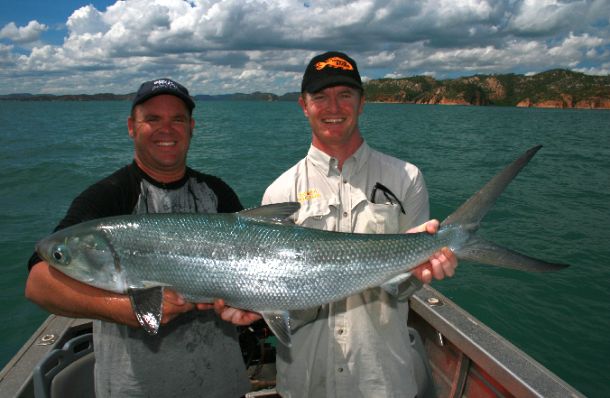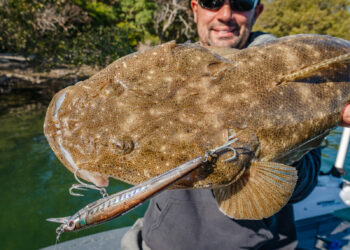THE milkfish, Chanos chanos, is one of the world’s most challenging and explosive light tackle sportfish.
This species can be encountered throughout the tropical and warm temperate regions of the Indian and Pacific Oceans, from South Africa to the Red Sea, throughout Asia to Hawaii, California and the Galapagos Islands. In Australia, milkfish have been recorded from the south-west coast of WA, around the tropical north of the country and down the east coast seasonally to Jervis Bay and even into Victoria.
Milkfish are the only member of the Family Chanidae – fish whose closest living relatives are obscure marine sandfishes. The forebears of today’s milkfish can be traced back in the fossil record over 100 million years to the Cretaceous period, where their primitive ancestors branched away from groups that today include carps and other cyprinids.
Milkfish are attractive fish with a torpedo shaped body that is blue-green above, silvery on the sides and white below. They have large eyes which are covered with a layer of gelatinous tissue, giving them a mullet-like appearance, while some have described them as resembling a primitive, toothless herring with a deeply forked tail.
The lifecycle of milkfish is typical of many tropical fish species in that the fry and juveniles are usually encountered in brackish or freshwater rivers, swamps and wetlands, while adult fish occur in coastal areas or around offshore islands and coral reefs. When planktonic food is abundant, large schools of adult fish can sometimes be seen swimming with their heads out of the water filtering plankton as they swim.
Milkfish mature at around five years of age, but only spawn in fully saline waters. Spawning usually occurs near coral reefs during the warm months of the year on the new or full moon phases, taking place mostly at night. Mature females around eight-years-old and 6kg in weight produce between 3-4 million eggs per spawn. The eggs and larvae stay in the plankton for two to three weeks, before they settle and juveniles recruit into brackish waters. Like adults, juvenile milkfish feed on a wide variety of small food planktonic items, from microbial mats to detritus, epiphytes and zooplankton.
Being plankton feeders, milkfish can be very hard to catch on hook and line, and most anglers who successfully hook milkfish do so after attracting them with liberal berleying with bread, followed by either baiting up with bread or presenting bread imitation flies. Once hooked, these plankton-fuelled torpedos are rocketships, displaying powerful runs and aerial displays worthy of the world’s top-shelf sportfish. Think of a turbocharged mullet which grows to 6 feet long and you will get some idea of what milkfish represent to the aspiring sportfisher!
Milkfish are reportedly good eating, though bony, and indeed farming of milkfish has been done for at least four to six centuries in many countries in South East Asia.
One of the best places to encounter them is at Doctors Gully, in Darwin Australia, where milkfish can be hand fed less than five minutes walk from the centre of the city. Unfortunately, you can’t fish there! The all tackle world record of 15kg came from South Africa, but FAO records show they grow bigger, to a maximum length of at least 2m and at least 20kg.





















